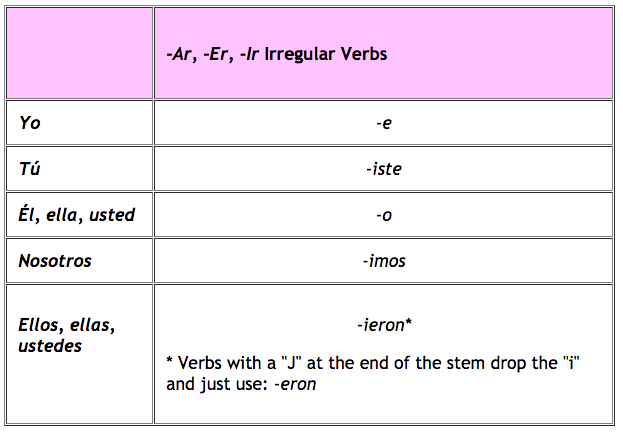
The passive voice in Spanish is rarely used, active constructions are preferred in most Spanish-speaking countries.Įxample for Active Voice : John rompió sus lentes de sol (John broke his sunglasses). They are in Passive Voice when the subject receives the action of the verb. They are in Active Voice when the subject performs the action of the verb. Verbs can be conjugated in Active Voice or Passive Voice. It is used to give orders, requests or wishes directly.

It is used to talk about something virtual that refers to possible, probable, desired or feared actions. When talking about real facts or that are taken for certain.

The modes form describes the relationship of the verb with the reality to which it refers. The action will take place in the future.Įxpress the action of the verb as a possibility. If the action is finished, it is called "Perfect Mode" and if it does not indicate that it is finished, it is called "Imperfect Mode" The action is performed at the current time. Times refer to when the action is executed. Personal pronouns are used to determine persons. 3rd none of the above and three other plural.Persons indicate who performs the action of the verb. To conjugate a verb, we have to list and understand the different forms that denote its different persons, number, tenses, modes, voice and other concepts. Spanish verb endings can indicate when the action occurs and also give the listener a better idea of who or what is doing the action. You should consider various tenses, modes and gender according to what needs to be conveyed in the sentence. But the conjugation of verbs in the Spanish language is a bit more complicated than in English. Native English speakers conjugate regular verbs all the time without even thinking about it, for the past tense just add "d" or "ed" to the end of a verb and for the present tense, you add an "s" or "es" to indicate that a person or thing is performing an action. Although there are conjugations that are easier to learn, the present indicative is the most used. The Indicative Present, in Spanish, indicates that the action expressed by the verb occurs at the same moment in which it is said. The most common set of verbs in Spanish and perhaps the most important to learn first is the "present indicative". If you are a student of the Spanish language, you probably already know that the verb is formed by the root (also called in Spanish as "lexema") that does not vary, and by the ending (also called in Spanish as "morpheme ending") that indicates the "person, number, tense and mode" of the verb conjugation. Verbs with words that indicate action, existence, condition or state of a subject.

We know that it can be confusing sometimes, but once you understand it, you will realize that it is not that complicated.
Ir verb endings how to#
However, they can be used at any time, especially for emphasis or clarification.Here we share a brief guide on how to conjugate verbs in the Spanish language. The verb endings indicate who is doing the action, so often the subject pronouns are omitted. The Spanish present tense is equivalent to three English forms. Like all -er and -ir verbs, vivir and comer conjugations differ from each other in the nosotros and vosotros forms. All regular -er and -ir verbs are conjugated in this way, by adding the ending on to the stem. Below, comer (to eat), a common -er verb, and vivir (to live), a common -ir verb are divided by their stems (com-, viv-) and their conjugation endings, which change with the subject. ER and IR verb conjugations in the present tense are almost identical.


 0 kommentar(er)
0 kommentar(er)
